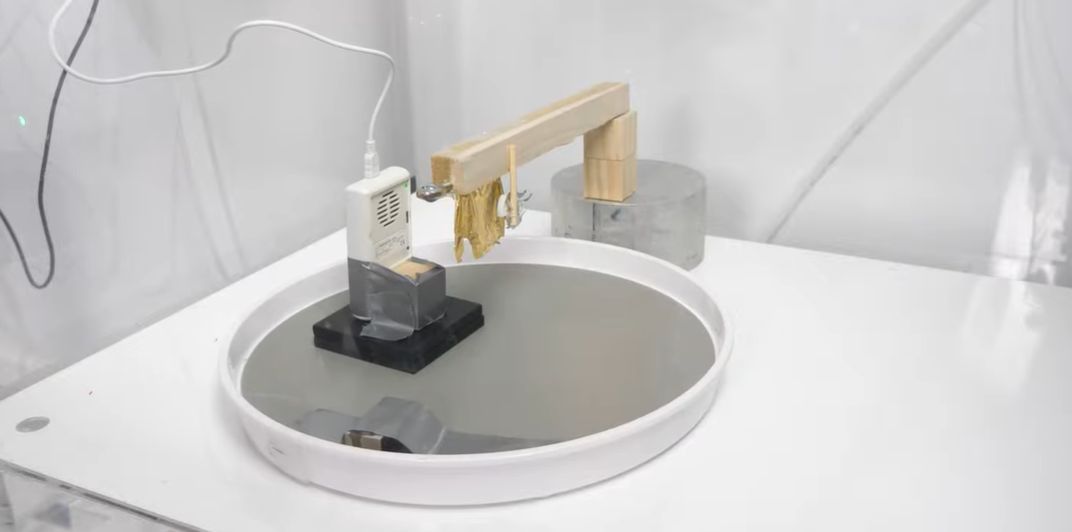Supercon 2024: Rethinking Body Art With LEDs
Tattoos. Body paint. Henna. All these are popular kinds of body art with varying histories and cultural connotations, many going back centuries or even longer. They all have something in …read more


Tattoos. Body paint. Henna. All these are popular kinds of body art with varying histories and cultural connotations, many going back centuries or even longer. They all have something in common, though—they all change how the body reflects light back to the viewer. What if, instead, body art could shine a light of its very own?
This is the precise topic which [Katherine Connell] came to discuss at the 2024 Hackaday Supercon. Her talk concerns rethinking body art with the use of light emitting diodes—and is both thoroughly modern and aesthetically compelling. Beyond that, it’s an engineering development story with liquid metal and cutting-edge batteries that you simply don’t want to miss!

The inspiration behind this project was simple. [Katherine] grew up in the 80s, and being exposed to that neon-soaked era gave her a desire to glow-in-the-dark. However, she didn’t want to get into any hardcore body modification—hence, she pursued a non-invasive stick-on solution.
As you might imagine, creating these wasn’t trivial. They need to stick to the skin for long periods of time without causing irritation, while also being lightweight and slim enough to be practical to wear. Indeed, to that end, Sprite Lights are less than 1.5 mm thick—an impressive engineering feat.
Her first attempts involved creating a synthetic skin-like material using latex, with LEDs stuck underneath. However, this wasn’t a particularly desirable solution. Latex allergies are relatively common, and producing the designs took a lot of careful hand-soldering and manual work. It was also difficult to attach the latex to the skin, and to color match it with the wearer to make it look right.
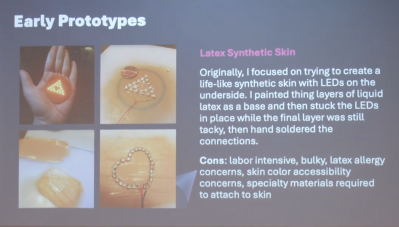
From there, [Katherine] experimented with 3D-printing thin films with transparent PLA, with LEDs underneath. This was a much quicker way to work, but still didn’t attach well to the skin and had some aesthetic flaws. Another 3D-printing attempt saw [Katherine] create molds to produce transparent silicone films with LEDs embedded underneath, but this again proved very labor intensive and it’s difficult to get silicone to stick to anything, including humans. [Katherine] even tried experimenting with Galinstan, a very off-beat metallic alloy, to make circuits inside flexible silicone. She created viable stretchable circuits but they were not very robust, particularly since the Galinstan tends to melt at body temperature.
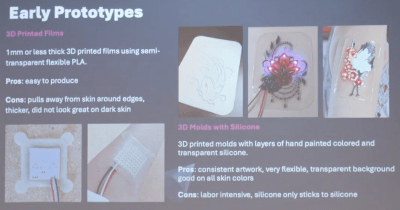
Having developed decent flexible circuits that could light up, power was next on the agenda. Desiring to create stick-on devices with an ultra-thin form factor, there was no room to include a traditional battery, so [Katherine] had to figure out how to power Sprite Lights effectively. She found flexible batteries from a company called Zinergy that could deliver 3V and 20 mAh. She was able to specify a custom flat round design, with the company able to make them just 0.7mm thick and 55 mm round. They use a compound similar to regular AA batteries, which is screen printed onto one layer of plastic and sealed with another layer on top. The batteries have the benefit of being safe to place on skin, with no risk of explosion or chemical exposure, even if they happen to be punctured or cut while worn. Perhaps the only drawback is that they’re non-rechargeable—they’re safe, but single-use.
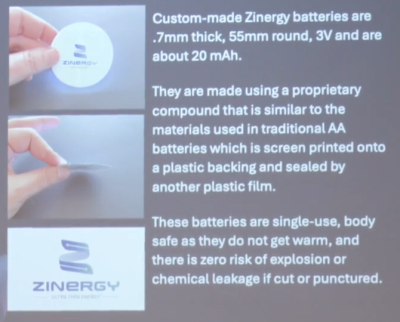
Armed with her new batteries, [Katherine] developed her concept further. She stepped up to using commercially-available flex PCBs produced by JLCPCB, in place of her homebrewed concepts used previously. She combined these with the flexible Zinergy batteries underneath, and custom-made die-cut stickers from MakeStickers on top. This gave her an art layer, an LED circuit layer, and a battery layer underneath, with a hypoallergenic medical tape used as the final layer to stick the assembly to the skin. An intermediate fabric tape layer is included to connect the battery’s contacts to the flex PCB, which is populated with LEDs. By leaving a paper layer on the fabric tape between the contacts, this allows the Sprite Light to remain off until it’s ready to be used. The combination comes in under 1.5 mm thick.
ED NOTE: Grabbed some pictures from the SpriteLights website.

Ultimately, Sprite Lights are a super-cool piece of body art. But beyond that, [Katherine] told us the great engineering story behind these astounding self-glowing stickers. As her fine example demonstrates, you can do really cool things if you just keep working at it and teach yourself the right skills along the way!













































































































































































![[The AI Show Episode 142]: ChatGPT’s New Image Generator, Studio Ghibli Craze and Backlash, Gemini 2.5, OpenAI Academy, 4o Updates, Vibe Marketing & xAI Acquires X](https://www.marketingaiinstitute.com/hubfs/ep%20142%20cover.png)































































































































![[DEALS] Microsoft Office Professional 2021 for Windows: Lifetime License (75% off) & Other Deals Up To 98% Off – Offers End Soon!](https://www.javacodegeeks.com/wp-content/uploads/2012/12/jcg-logo.jpg)

















































































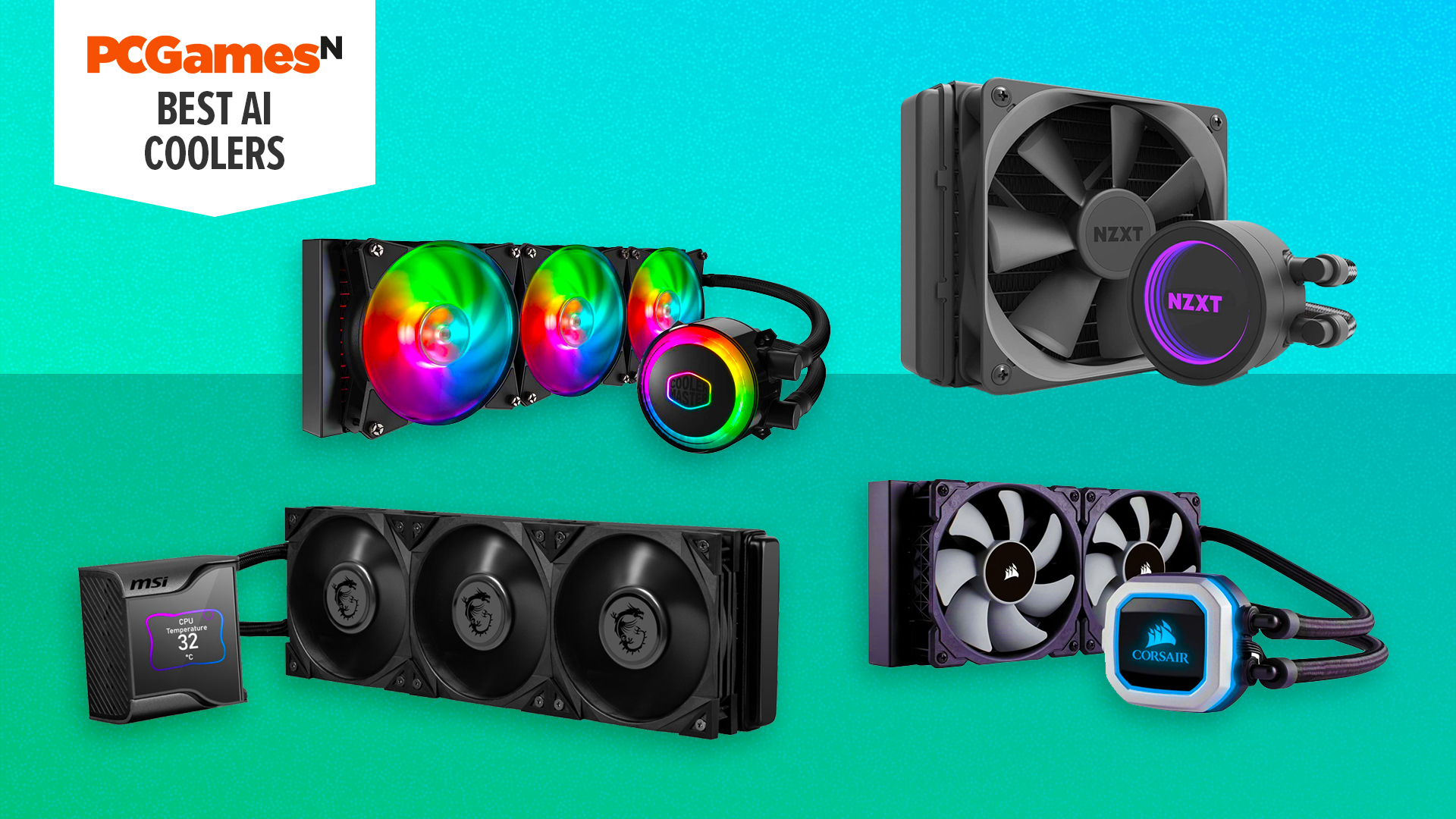



























































_Anthony_Brown_Alamy.jpg?#)
_Hanna_Kuprevich_Alamy.jpg?#)




.png?#)

























































































![Hands-on: We got to play Nintendo Switch 2 for nearly six hours yesterday [Video]](https://i0.wp.com/9to5toys.com/wp-content/uploads/sites/5/2025/04/Switch-FI-.jpg.jpg?resize=1200%2C628&ssl=1)
![Fitbit redesigns Water stats and logging on Android, iOS [U]](https://i0.wp.com/9to5google.com/wp-content/uploads/sites/4/2023/03/fitbit-logo-2.jpg?resize=1200%2C628&quality=82&strip=all&ssl=1)














![YouTube Announces New Creation Tools for Shorts [Video]](https://www.iclarified.com/images/news/96923/96923/96923-640.jpg)

![Apple Faces New Tariffs but Has Options to Soften the Blow [Kuo]](https://www.iclarified.com/images/news/96921/96921/96921-640.jpg)
































































































































